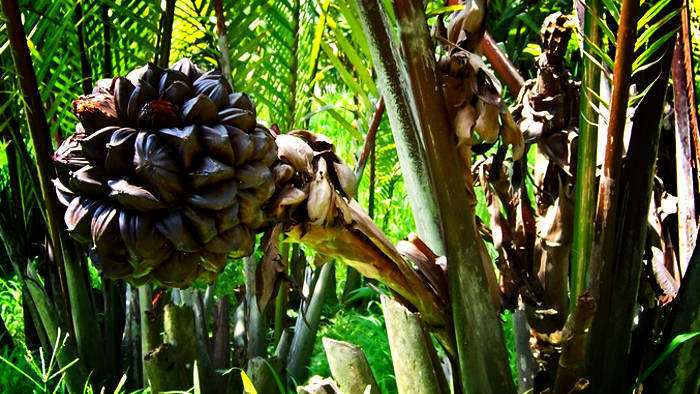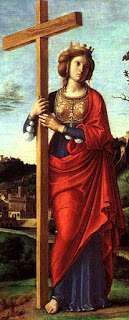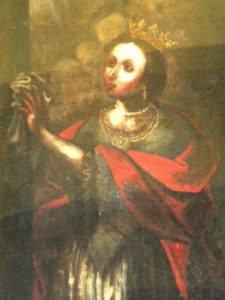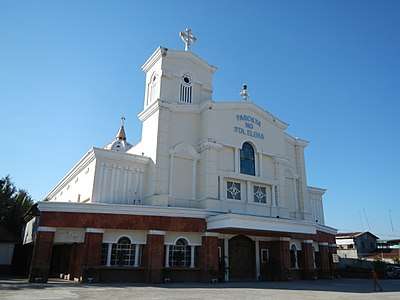Table of Contents
Marulao, also known as Santa Elena is a small barangay in Hagonoy, Bulacan. Situated near bodies of water, the main livelihoods of the residents in Sta. Elena is fishing and producing vinegar from the “Sasa” or Nipa tree. Sta. Elena is known for its patron saint, Santa Elena, or Saint Helen of the cross. That is probably the main reason why the place was called Sta. Elena.
Who is Santa Elena?
Saint Helena, locally known as Santa Elena, is the mother of Emperor Constantine the Great and was the presses of the Roman Empire. She became known for finding the true cross of Jesus. According to some accounts, three crosses were found after excavating one of the temples in Jerusalem as ordered by the empresses.
To identify which of the three crosses was true, a dying woman was brought to the site where the crosses were found. When the woman touched the first two crosses, nothing happened. As she felt the third and last cross, her condition suddenly improved. Thus, Helena declared the third cross as the true cross.
Although there is no evidence, it is also believed that Helena also found four nails believed to be the nails used during the crucifixion of Jesus. She is the patron saint of mothers, divorce, archaeologists, impresses, and Malta.
Among the images of Sta, Elena, the framed painting is said to be the original. It is an oil painting that shows Empress Helena and Emperor Constantine on both sides of the cross. According to the stories of the locals, the image was found by a fisherman and some locals.
They surrendered it to the church in the town (Calumpit since, during that time, Hagonoy was just a barrio of Calumpit). Still, the painting returns to where they found it, where the church stands today, every time they bring it to the church.
That is why a small chapel made of nipa and bamboo serves as the shrine of the painting. As time passed by, the site was declared a parish. The other images are the ‘matandang festejada’, ‘festejada’ and the ‘callejera’.
During the fiesta, the different images take turns in the procession. There is also a unique tradition in Sta. Elena. In the afternoon of the vespers, they hold a march called ‘pasalubong’ where the devotees fetch the festejada from Sagrada Familia after staying there the whole day of the vesperas.
The fiesta of Sta. Elena is not just a typical fiesta. The parish celebrates her fiesta twice a year. The first fiesta, or the traditional, is held on May 3 and 4. Every 18th of August, another fiesta was held. This fiesta is known as the ‘posting pasasalamat’ (thanksgiving) or the ‘posting muntin (small fiesta).
People from different places go to Sta. Elena, every 4th of May, to pay homage to the patron. According to the devotees, the reasons why they go to Sta. Elena, every fiesta is to ask a favor and to give thanks for the blessing they receive. For them, Santa is miraculous, not to be doubtful, because of the number of devotees of Sta. Elena proves it.
One famous story among the devotees and the locals of Sta. Elena is the story of the ‘pangungumbida’ of Sta. Elena herself. According to the report, a beautiful lady goes around the town weeks before the fiesta, saying, “Kinukumbida ko kayo.”
The lady says that she lives in Sta. Elena gives the people directions on how to get there and what her house looks like. Afterward, the lady suddenly disappears. When the people go to the said place on the day of the fiesta, to their surprise, they would see a church whose patron is Sta. Elena. As they enter, they will see the beautiful lady who invited them standing on top of the carroza, and they will realize that the lady is Sta. Elena herself.
Back in the days when I got bored every time, my mom would bring me to church to attend mass; I remember going to the house of our relative, whose home is situated beside the church.
In the morning, after attending mass, we used to walk along the streets of Sta. Elena went to the bridge to Sagrada Familia (a barangay next to Sta. Elena) to buy food, toys, souvenirs, and other ‘anik anik’ during the fiesta week of Sta. Elena, vendors from nearby go to Sta. Elena and set up their tents along the streets.
Popcorn, samalamig, kakanin, toys, balloons, kitchen utensils, house decors, games, birds, colored chicks, etc.; the fiesta of Sta. Elena is truly a ‘Pista sa Aming Nayon’. After our tour along the streets, we return to the house and eat our merienda as we prepare ourselves for the morning procession. Since we were still young then, we only waited for the parade to pass by the house.
My sister and I usually go up the balcony to better view the procession. I remember the people there saying “Mamayang gabi mas masaya. Mas maraming tao at mas mahaba ang prusisyon!”. As much as I want to join the evening procession, I cannot because I am too young to join such an event. As the parade takes its way, going back to the church, we will have our lunch; of course, it is not just an ordinary lunch since it is a fiesta.
After some rest, we return to the church to witness the ‘pahalik’ and the ‘pagpuputong’ of Sampaguita leis to Sta. Elena. Our visit to Sta. Elena is complete without taking home holy oils placed on cylindrical camera film cases in exchange for a donation to the church.
Sadly, as time passed, we became busier with other things and no longer attended Sta. Elena’s fiesta. Last year, I did my best to participate in the afternoon mass and join the evening procession to revive our devotion to Santa. I promised myself that I would visit her during the fiesta yearly or at least once yearly. Viva Apo Elena!
Read Mayor’s Name Removed From New Hagonoy Welcome Arch, When is Holy Week 2022 in the Philippines? and Bulacan vs. Bulakan: What is the difference?




